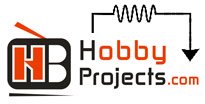Tracing a Schematic Tutorial
What it means is, relating a circuit schematic to the actual physical layout of a piece of electronics. It is a necessary skill when fault finding.
To do it, you must be able to recognise components and read their values, or type numbers. You must also know their circuit symbols. If working on printed circuit boards, it helps if you are able to see both sides of the board. You must isolate the power before doing this.
To begin with, you need a starting point. This is usually a single component which you are able to locate on both the schematic and the equipment.
It is something easily identifiable, such as a mains transformer, loudspeaker socket, power transistor with marked type number etc.
Once you have done this, you move on to identify other components connected to this component.
After that, identify more components, moving in the direction of the part of the circuit which you are investigating.
You should be able to identify all the
components in that part of the layout
which interests you.
Relating the schematic and the practical layout makes fault finding much easier. This skill is also useful if you don't have a circuit schematic.
You can identify the component layout around the area in which you are interested and trace (draw) that part of the schematic.
This skill also enables you to make a component layout drawing, using a schematic as a guide.
"Reading schematics" is something completely different. It means the ability to look at a schematic and describe in detail how the circuit works.
